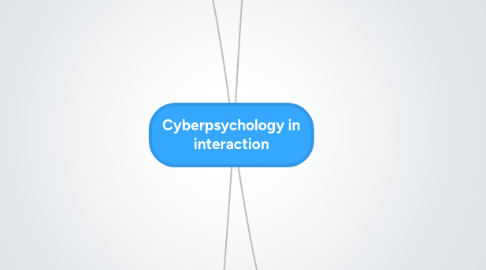
1. Microblogging In technology Enhanced Learning
1.1. twitter is a conversation, not a monologue
1.2. true value of twitter is networking
1.3. Uses
1.3.1. conversation
1.3.2. sharing information
1.3.3. reporting news
1.4. hashtags
1.4.1. Twemes
1.4.1.1. Connecting the remote network to a given event
1.4.1.2. Creates a collaborative resource based on unpremeditated story-telling.
1.5. The Experiment
1.5.1. Subjects: PhD students and researchers
1.5.2. Goal: to support collaboration among PhD students working in the disparate ends of expertise
1.5.3. Used Wordle to create "tweet clouds" to visualize the terms used
1.5.4. Tweet content directly corresponded to content of the lectures held that day.
1.5.5. Liked twitter for 3 reasons
1.5.5.1. easy and intuitive interface
1.5.5.2. tweets are shorter than blog posts
1.5.5.3. twemes aggregates content using the special hashtag
1.6. Survey Results
1.6.1. 88% participated (60 of 68)
1.6.1.1. 45% female
1.6.1.2. 55% male
1.6.2. No differences in responses concerning gender or educational background.
1.6.3. Only 10 (16%) had twitter accounts prior to the experiment
1.6.4. Most wanted to take active part in twittering. Were curious and intrigued.
1.6.5. 70% found twitter encouraging to join discussions
1.6.6. 55% continued to use Twitter after the experiment
1.6.7. Effective immediate communication
1.6.8. Complaints
1.6.8.1. Fail Whale
1.6.8.2. 140 character limit
1.6.8.3. Some found it distracting
1.6.8.4. Overwhelmed by the number of messages
1.7. Conclusions
1.7.1. no ubiquitous learning strategy
1.7.2. Microblogging can be used as an interesting discussion and sharing back-channel in learning events.
1.7.3. Signup and participation are influenced by peer users
2. Why We Twitter
2.1. analyze different types of user intentions
2.1.1. will help evolve microblogging and improve the client and infrastructure of the software
2.1.2. requires looking at content and link structure
2.2. TWittering intentions
2.2.1. daily chatter
2.2.2. conversations
2.2.3. sharing information
2.2.4. reporting news
2.3. Experiment
2.3.1. Used Twitter API to fetch social network of all users (how users are connected to each other)
2.3.2. total of 1,348,543 updates from 76,177 users
2.3.3. updates were fetched every 30 seconds
2.3.4. mapped each user to their geographic location from the profile
2.3.5. estimate growth of twitter based on how many users sign up each day
2.3.5.1. although the rate of users joining twitter has slowed, the number of posts are increasing, doubling every month
2.4. Results
2.4.1. Twitter social network statistics match blogosphere statistics
2.4.2. there are more intracontinental links than across continents. this is consistent with observations that probability of friendship between two users is inversely proportionate to their geographic proximity.
2.5. user intention detection
2.5.1. hub/authority detection
2.5.1.1. friendship-wise relationship
2.5.1.2. information seeking
2.5.1.3. information sharing
2.5.2. 13% url sharing posts
3. Social Network Analysis and Distance Learning
3.1. Cohesion is an attractive “force” between individuals.
3.1.1. Measures number of exchanges between 2 people
3.1.2. the geodisc distance /proximity between 2 people
3.1.3. minimum number of cut-points necessary to disconnect 2 people
3.2. Experiment
3.2.1. 40 students divided into 4 groups
3.2.1.1. 3 achieved the simulation
3.2.2. Simuligne - distance french learning session
3.2.3. role-playing simulation
3.2.4. 10 weeks
3.2.5. 4 parts
3.3. Results
3.3.1. Discussion forum: 2686 messages (45.11% of communications)
3.3.2. Email: 4062 messages (42.84%)
3.3.3. Chat: 12%
3.3.3.1. less successful because of the time constraints. people in DL (distance learning) like relaxed constrains
3.3.4. Asynchronous communications tools are best for DL
4. Social Software: E-Learning Beyond LMS
4.1. Mostly used for administrative purposes
4.2. LMS so far have had a limited impact on pedagogy
4.3. Moving away from centralized and integrated LMS and towards a variety of separate tools which are used and managed by the students in relation to their self-governed work.
4.4. How social software can be used to support a social constructivist approach to e-learning
4.5. integration vs. separation
4.5.1. The usefulness of different tools in support of learning depends on which learning activities the tools should support.
4.6. social aspect of the technologies often emerges from a combined use of different technologies
4.6.1. blogs reach their full potential when it is related to other blogs, subscribed to, gets commented on
4.6.2. social bookmarking - most useful when done by a large number of people. recommendations based on your bookmarks subscribing to RSS feeds for new bookmarks
4.6.3. Wikis
4.7. social tools should be used based on the specific learning activities
4.8. learning is a social and active process
4.9. students should direct their own problem-solving process
4.9.1. students' self-governed and problem-solving activities are the focal point of a learning process
4.9.2. learning environment needs to be open-ended because students' activities cannot be pre-determined
4.9.3. self-governed and problem-based activities are not very well supported by LMS. that's not their purpose
4.10. Resources are not learning materials until they are used actively by students
4.10.1. media
4.10.2. people
4.10.3. places
4.10.4. ideas
4.11. resources need to be contextualized to determine situational relevance and meaning
4.12. problem with LMS is that it is aimed at administrative activities of teachers, not problem-based and collaborative work of students
4.13. Types of networks
4.13.1. collaborative (working on the same project)
4.13.2. sharing context (students and teachers in the same class or school)
4.13.3. sharing a field of interest (may involve non-students and non-teachers)

